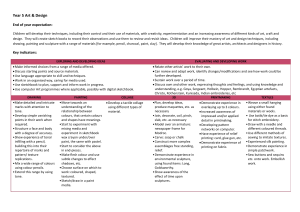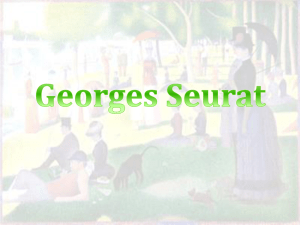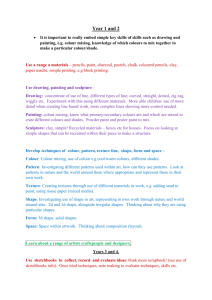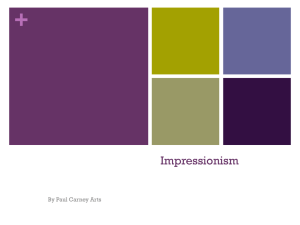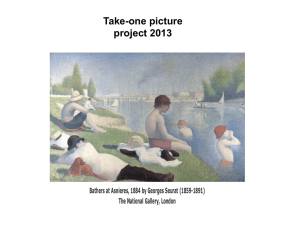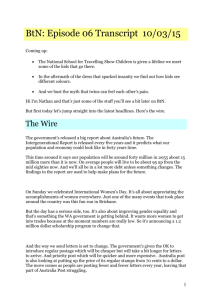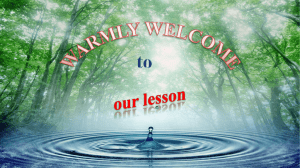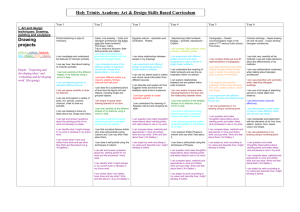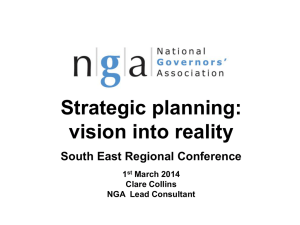Teacher Project Outline
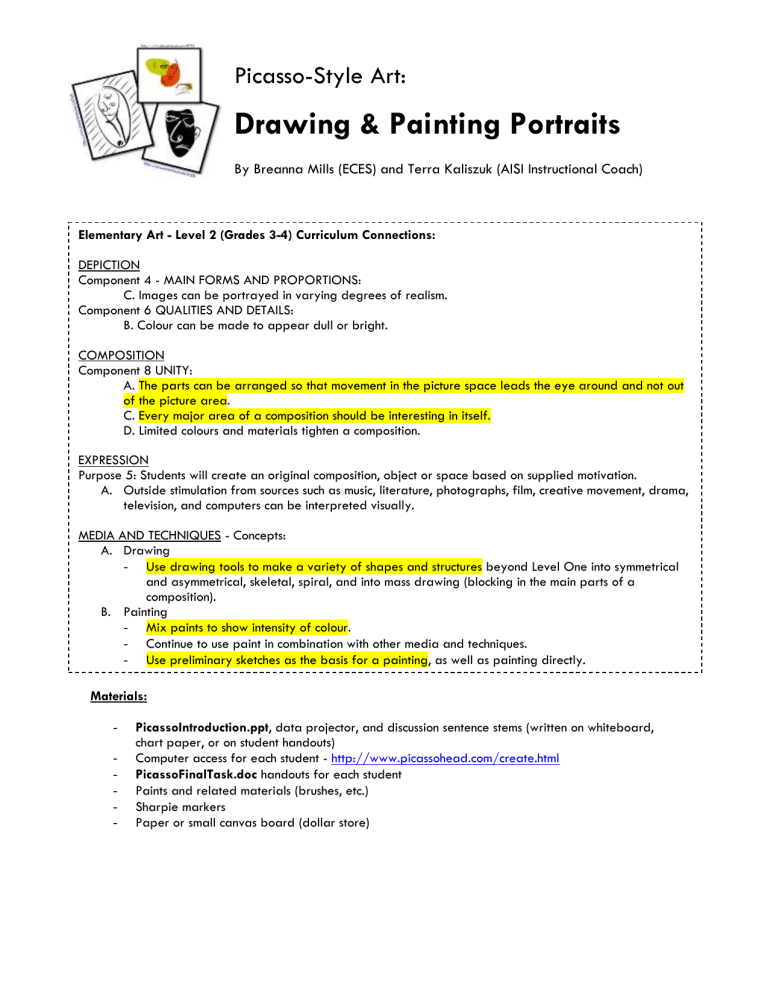
Picasso-Style Art:
Drawing & Painting Portraits
By Breanna Mills (ECES) and Terra Kaliszuk (AISI Instructional Coach)
Elementary Art - Level 2 (Grades 3-4) Curriculum Connections:
DEPICTION
Component 4 - MAIN FORMS AND PROPORTIONS:
C. Images can be portrayed in varying degrees of realism.
Component 6 QUALITIES AND DETAILS:
B. Colour can be made to appear dull or bright.
COMPOSITION
Component 8 UNITY:
A. The parts can be arranged so that movement in the picture space leads the eye around and not out of the picture area.
C. Every major area of a composition should be interesting in itself.
D. Limited colours and materials tighten a composition.
EXPRESSION
Purpose 5: Students will create an original composition, object or space based on supplied motivation.
A.
Outside stimulation from sources such as music, literature, photographs, film, creative movement, drama, television, and computers can be interpreted visually.
MEDIA AND TECHNIQUES - Concepts:
A.
Drawing
Use drawing tools to make a variety of shapes and structures beyond Level One into symmetrical and asymmetrical, skeletal, spiral, and into mass drawing (blocking in the main parts of a composition).
B.
Painting
Mix paints to show intensity of colour.
Continue to use paint in combination with other media and techniques.
Use preliminary sketches as the basis for a painting, as well as painting directly.
Materials:
PicassoIntroduction.ppt, data projector, and discussion sentence stems (written on whiteboard, chart paper, or on student handouts)
Computer access for each student - http://www.picassohead.com/create.html
PicassoFinalTask.doc handouts for each student
Paints and related materials (brushes, etc.)
Sharpie markers
Paper or small canvas board (dollar store)
Lesson Progression
1.
PicassoIntroduction.ppt (Teacher notes are included in the PowerPoint) – Introduce students to
Picasso’s art through a small group discussion analysis.
Please see implementation notes embedded in the PowerPoint Presentation:
2.
Practice Task – www.picassohead.com/create.html
and slides 11-12 on PicassoIntroduction.ppt.
Students use the online picassohead creator to create their own original Picasso-style portraits.
This is a practice, formative assessment opportunity.
3.
Final Task - PicassoFinalTask.doc
Students draw and paint their own original Picasso-style portrait, addressing 4 main criteria related to the Program of Studies outcomes.
Assessment Suggestion: Teacher may create a rubric based on the 4 criteria to ensure assessment is based on the Program of Studies.
Cross-Curricular Connections & Extension Ideas
Idea for Extension:
Instead of every student creating a Picasso-esque portrait, students can select a style of art that interests them, explore the style via online tools, and create their own art inspired by the style.
Fine Art Online Games:
Still Life: http://www.nga.gov/kids/zone/stilllife.htm
Portraits & Landscapes (American Indian style): http://www.nga.gov/kids/zone/facesplaces.htm
Jackson Pollock: http://www.nga.gov/kids/zone/brushster.htm
Henri Rousseau: http://www.nga.gov/kids/zone/jungle.htm
Cross-Curricular Connections:
Several opportunities exist to create cross-curricular connections to this art project.
Science 4, Unit D – Light and Shadows: o S.O. 11 - Recognize that light can be broken into colours and that different colours of light can be combined to form a new colour. o Connection Question: How does mixing paint colours compare to mixing light colours?
LA 4: o Students can research their artist and show their research findings using the format of their choice.
3.2 - locate information to answer research questions, using a variety of sources, such as maps, atlases, charts, dictionaries, school libraries, video programs, elders in the community and field trips
3.3 - record ideas and information that are on topic
- organize oral, print and other media texts into sections that relate to and develop the topic
- paraphrase information from oral, print and other media sources
3.4 - select visuals, print and/or other media to add interest and to engage the audience o Students can use various formats to reflect on their artist’s work, their paintings, or personal connections related to the project.
1.2 - use talk, notes, personal writing and representing to record and reflect on ideas, information and experiences

